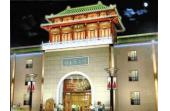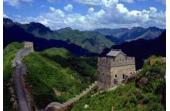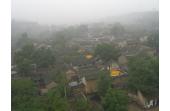Beijing
- Things to do
-
- Photo(242)
- Tips&article(1193)
- Make it Happen
- Map
-
loading...
- Other Tours
-
- Wangfujing Shopping Street
- Hutong Tour In Xicheng District
- Beijing Museum Of Natural History
- Beijing
- Beijing Military Museum
- Sackler Museum Of Art And Archeology
- Ancient Coin Museum
- Beijing Folklore Museum
- National Grand Theater
- The Shijingshan Amusement Park
- Beihai Park
- Beijing 789 Art Zone
- Birds Nest
- Xiushui Street
- Ming Tombs
- Marco Polo Bridge
- Tiananmen Square
- Beijing Zoo
- Bell Tower
- Beijing Ocean Park
Standing side-by-side with old Beijing's crimson palace complexes are the city's impressive skylines. Beijing is a fine example of the great transformation China has undergone as it burst into the 21st century. The city boasts the most modern facilities, and is able to provide all the comfort and enjoyment imaginable to Beijing visitors.
Beijing has many places of historic interest and architectural/scenic beauty, including: the Forbidden City, the largest and best preserved ancient architectural complex in the world; the Temple of Heaven, where Ming and Qing emperors performed solemn rituals for bountiful harvests; the Summer Palace, the emperors' magnificent garden retreat; the Ming Tombs, the majestic mausoleums of 13 Ming Dynasty emperors; and the world-renowned and genuinely inspiring Badaling section of the Great Wall.
Top Things to Do in Beijing
- Beijing is home to some of the finest remnants of China's imperial past. The interest of visiting Beijing is at one side to explore its glorious past, and at another side to feel its modernity as well as an odd combination of the two.
- More Top Things to Do in Beijing
Beijing’s invaluable cultural heritage of imperial relics has drawn millions of visitors every year for the past three decades, but traveling around Beijing, one is struck by the city's modern buildings, and the super-modern Olympic Village, with the Bird’s Nest Stadium and Water Cube.The green areas in and around the city are also inspiring, and are epitomized by Xiangshan (Fragrant Hills) Park. The exhilarating greens of a Beijing Park add more vitality and hue to visitors’ Beijing memories.
Beijing, China’s second largest city after Shanghai, dominates the north of China, despite its proximity to the ports of Tianjin Municipality, China’s third largest city. It is at approximately the same latitude as Philadelphia in the U.S. (but drier in winter and much wetter in summer) and Madrid in Spain (though colder in winter). See Beijing Weather.
Beijing’s air pollution and traffic congestion are problems that are being tackled with improved public transport, restrictions on the use of vehicles and the relocation of factories. Great improvements were made before the Olympics. Daily and localized variations in airborne particle levels are great, with some days below the WHO’s strictest targets, and days when a health warning is issued are quite rare.
Beijing’s air quality, apart from pollutants, is greatly affected by occasional dust storms in the spring, and humidity contributes greatly to the haze in summer, which is the worst time of the year for pollution.
Beijing's travel industry has forged forward after China's economic reforms in 1978, and the city is now one of the most popular tourist destinations in the world. Beijing became the focus of world attention in 2008 when it hosted the Olympics. The games were a symbol of both China’s progress and China’s tradition, with high-class and eye-catching facilities and spectacular ceremonies. People from all around the world were welcomed to travel to Beijing under the slogan “One World, One Dream”.
Things to do with Kids in Beijing
- Beijing offers plenty of fun for your kids. They will marvel at the sight of numerous historical monuments, and they also will be very proud to tell their friends that they climbed the Great Wall.
- Check out Fun Activities to Do with Kids in Beijing
Beijing History
Some half a million years ago, Peking man lived in Zhoukoudian, in the southwestern suburbs of Beijing. The climate of that time was warmer and more humid than it is today. Forests and lakes in the area supported large numbers of living creatures. The fossil remains of Peking man, his stone tools and evidence of use of fire, as well as later tools of 18,000 years ago, bone needles and article of adornment from the age of Upper Cave Man are the earliest cultural relics on record in China today. More about Beijing History
Tips & articles
|
|
|
forum discussion
|
|
|












